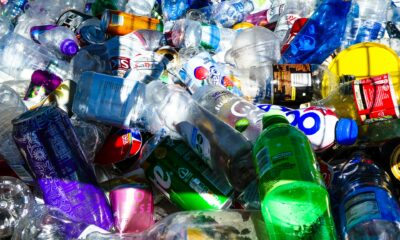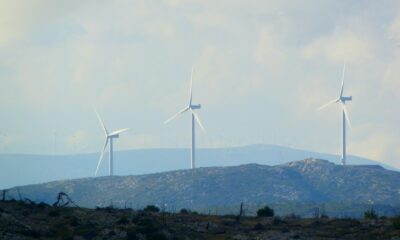Featured
60% of the Italian Companies Have Medium-Low Levels of ESG Adequacy
In general, the CRIF study tells us that 30 percent of Italian companies have a high level of ESG adequacy, while 60% stop at medium-low levels. Even worse is the 8% of companies, for which we instead speak of a very low level of ESG adequacy. Looking at the size of companies, it turns out that SMEs are the ones that seem to need the most support to speed up their ESG transition.

At what point is the ESG transition of Italian companies? As is well known, in order to actually change the situation, for the sake of mankind as well as the planet, it is good for all organizations to follow a path of improvement in the Environmental, Social, and Governance fields, thus improving their management at the environmental, social and governance levels.
But what does the current situation of businesses in our country look like? Giving an overall picture is CRIF’s ESG Outlook survey, as presented during the webinar “ESG: CRIF Outlook and the UNICREDIT Project.”
Read more on the subject and find the latest business news of the day with the Born2Invest mobile app.
The ESG transition survey of Italian companies
The CRIF Outlook started from the analysis of a sample consisting of 150 thousand Italian companies. In order to understand at what point in the ESG transition to situate each individual company, the researchers identified more than 150 indicators, so that they could then assign a final and objective score to each company (taking into account in each case the differences dictated by business sector and geographical location).
In general, the CRIF study tells us that 30 percent of Italian companies have a high level of ESG adequacy, while 60 percent stop at medium-low levels. Even worse is the 8 percent of companies, for which we instead speak of a very low level of ESG adequacy.
Looking at the size of companies, it turns out that SMEs are the ones that seem to need the most support to speed up their ESG transition, whereas, on the other hand, companies with a turnover of more than 10 million euros are the ones that are generally further along their path.
The great diversity at the environmental factor level
Among the indicators considered by the researchers were those related to the environmental factor. Here the results were the most diverse, with great heterogeneity both at the level of the sector to which they belong and at the level of the region. In terms of geographical distribution, it is possible to say that 60 percent of companies in Lombardy and Piedmont boast a high or very high score for the environmental factor, a percentage that is just above 50 percent for companies in Tuscany and Liguria, and just below for those in Trentino and Friuli.
On the other side of the ranking, in the worst positions, are the enterprises of Val d’Aosta: here 89 percent of enterprises have a low or very low score. On the other hand, it is 73 percent for Sicily, 60 percent for Apulia, 59 percent for Calabria and 55 percent for Sardinia.
Looking at sectors, the differences are also very large. The sectors that boast the highest number of companies with very low levels of ESG adequacy are the chemical industry (in 83 percent of cases) electronics (69 percent of cases) and agriculture (67 percent of cases). On the other hand, among the sectors that show a higher number of companies with good ESG transition are real estate and leisure companies, in both cases with more than 60 percent of companies with high or very high levels of adequacy.
Businesses’ risk in the face of climate change
Among other things, CRIF’s survey also went to look at the potential economic and financial impact that different companies might suffer in the face of climate change and environmental degradation. Considering the gradual or chronic risk, a 16 percent slice of companies are very exposed; in the case of an acute risk, 5.9 percent of SMEs are exposed or very exposed.
As Marco Macellari, Director – Head of Risk Management at CRIF, explained, “From our ESG Outlook, which is distinguished by original and multidimensional views that combine analysis on the sustainability of businesses, consumers and real estate, it can be seen that only 1 in 3 companies can say that they are at an advanced level of their path towards a sustainable economy. This confirms the key role of green finance in first enabling and then accelerating this virtuous path.”
__
(Featured image by geralt via Pixabay)
DISCLAIMER: This article was written by a third party contributor and does not reflect the opinion of Born2Invest, its management, staff or its associates. Please review our disclaimer for more information.
This article may include forward-looking statements. These forward-looking statements generally are identified by the words “believe,” “project,” “estimate,” “become,” “plan,” “will,” and similar expressions. These forward-looking statements involve known and unknown risks as well as uncertainties, including those discussed in the following cautionary statements and elsewhere in this article and on this site. Although the Company may believe that its expectations are based on reasonable assumptions, the actual results that the Company may achieve may differ materially from any forward-looking statements, which reflect the opinions of the management of the Company only as of the date hereof. Additionally, please make sure to read these important disclosures.
First published in green.it, a third-party contributor translated and adapted the article from the original. In case of discrepancy, the original will prevail.
Although we made reasonable efforts to provide accurate translations, some parts may be incorrect. Born2Invest assumes no responsibility for errors, omissions or ambiguities in the translations provided on this website. Any person or entity relying on translated content does so at their own risk. Born2Invest is not responsible for losses caused by such reliance on the accuracy or reliability of translated information. If you wish to report an error or inaccuracy in the translation, we encourage you to contact us

-

 Markets2 weeks ago
Markets2 weeks agoGlobal Sugar Market Sees Mixed Trends Amid Weather Shifts and Price Pressures
-

 Fintech3 days ago
Fintech3 days agoKraken Launches Krak: A Game-Changing Peer-to-Peer Crypto Payment App
-

 Africa2 weeks ago
Africa2 weeks agoAgadir Welcomes Nearly 570,000 Tourists by May 2025
-

 Cannabis6 days ago
Cannabis6 days agoRecord-Breaking Mary Jane Fair in Berlin Highlights Cannabis Boom Amid Political Uncertainty

























